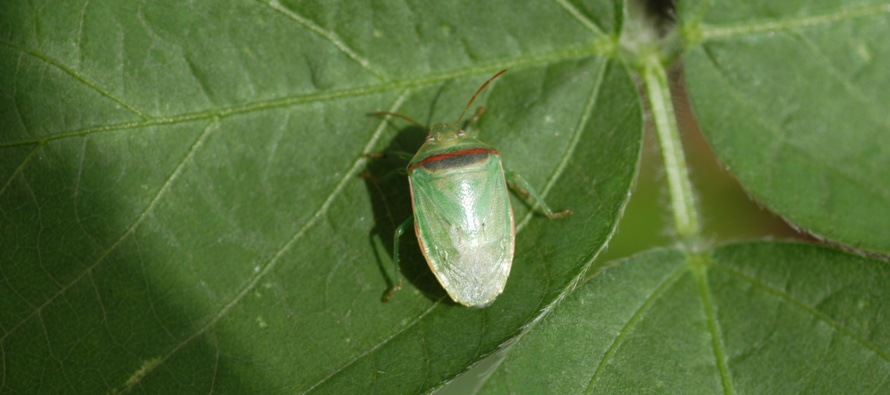Redbanded Stink Bugs and R3 Fungicide Applications in Soybean

Related Articles
- 2010 Soybean And Corn Variety Trial Data 3
- Mississippi Cotton Insect Situation of 2010: A Look Back 3
- Rice Insecticidal Seed Treatment Recommendations for Mississippi in 2011 0
Latest Tweets
Getting more calls everyday about low numbers of Redbanded Stink Bugs (RBSB) in R2/R3 soybeans. Many are asking about what to mix with a fungicide to take them out. Before jumping out too quickly, consider this, I would suspect very little if any damage to soybeans even by RBSB to beans that are not setting pods. I do realize that indeterminate beans may have pods at the bottom that are susceptible to RBSB, however, the numbers being reported are very low and not economic at this time. Also, these bugs are just now moving into these fields from wild host plants. We know for a fact that insecticides generally only provide 5-7 days before reinfestation of RBSB and if applications are made too soon, it will not reduce numbers that are migrating into the field even a few days later. Additionally, it will not prevent higher populations later. The biggest issue I have with this is that there is very little insect pressure in these early planted fields that would justify an insecticide and we have the potential to flare bollworms, requiring further sprays. We have gotten several reports of bollworms showing up at low numbers already. An acephate or pyrethroid application can and often will create more problems down the road if not needed.




Since you mention fungicide application, can you go thru the math of justifying a $17 an acre (counting air application) application?
I am not sure what you are asking? Justify not spraying and insecticide when no insects are present with a fungicide shot, or justify a fungicide shot in general?